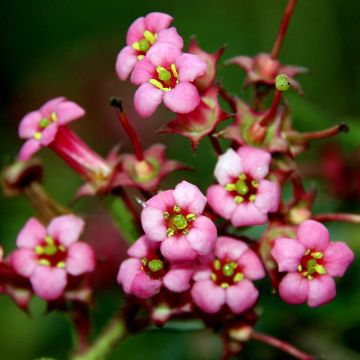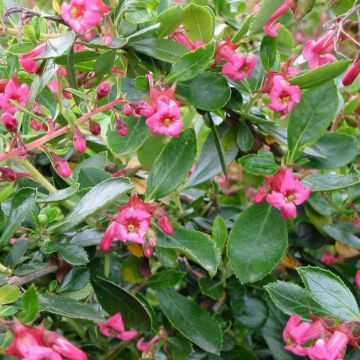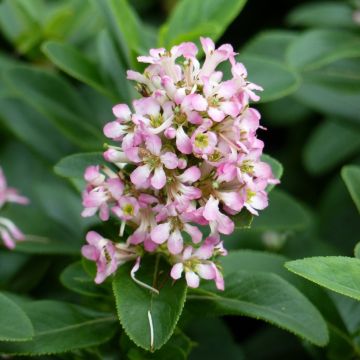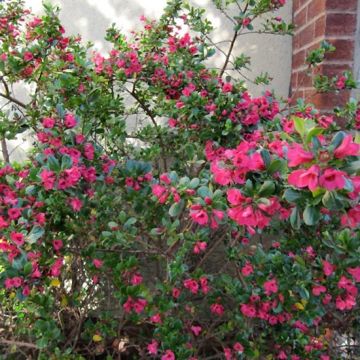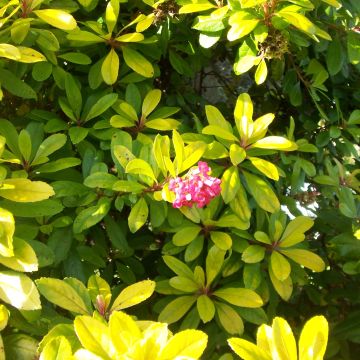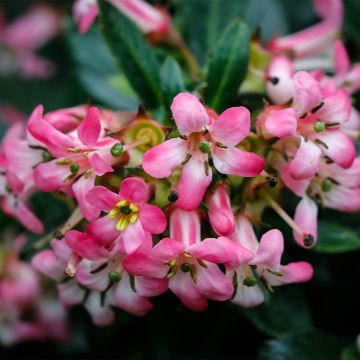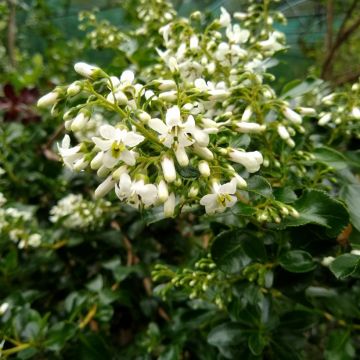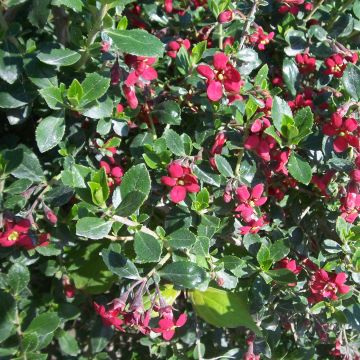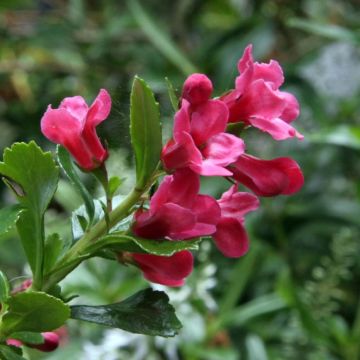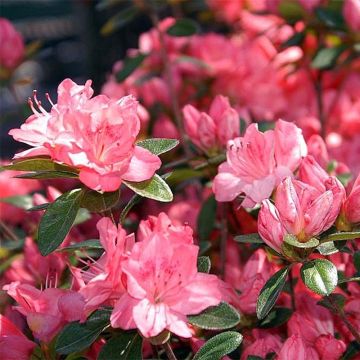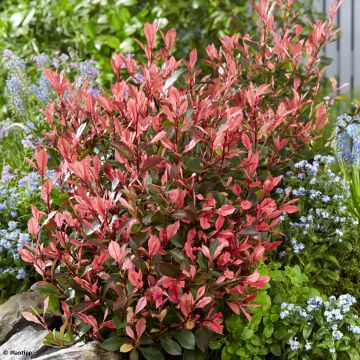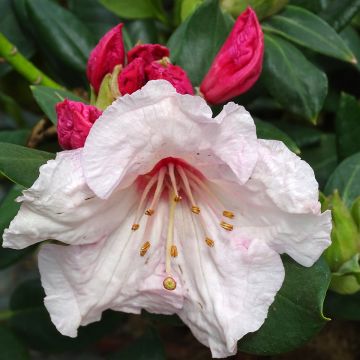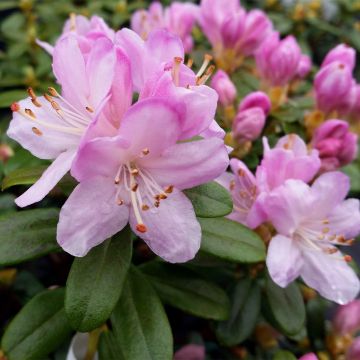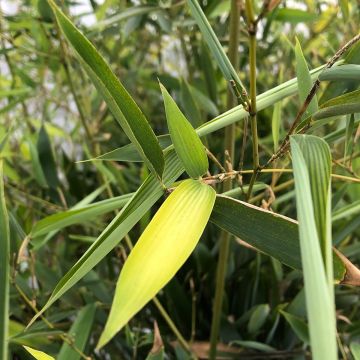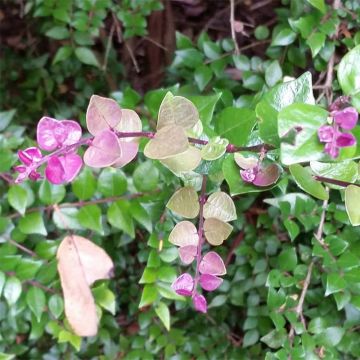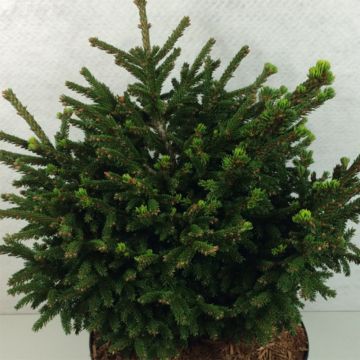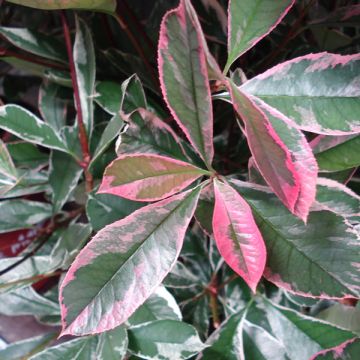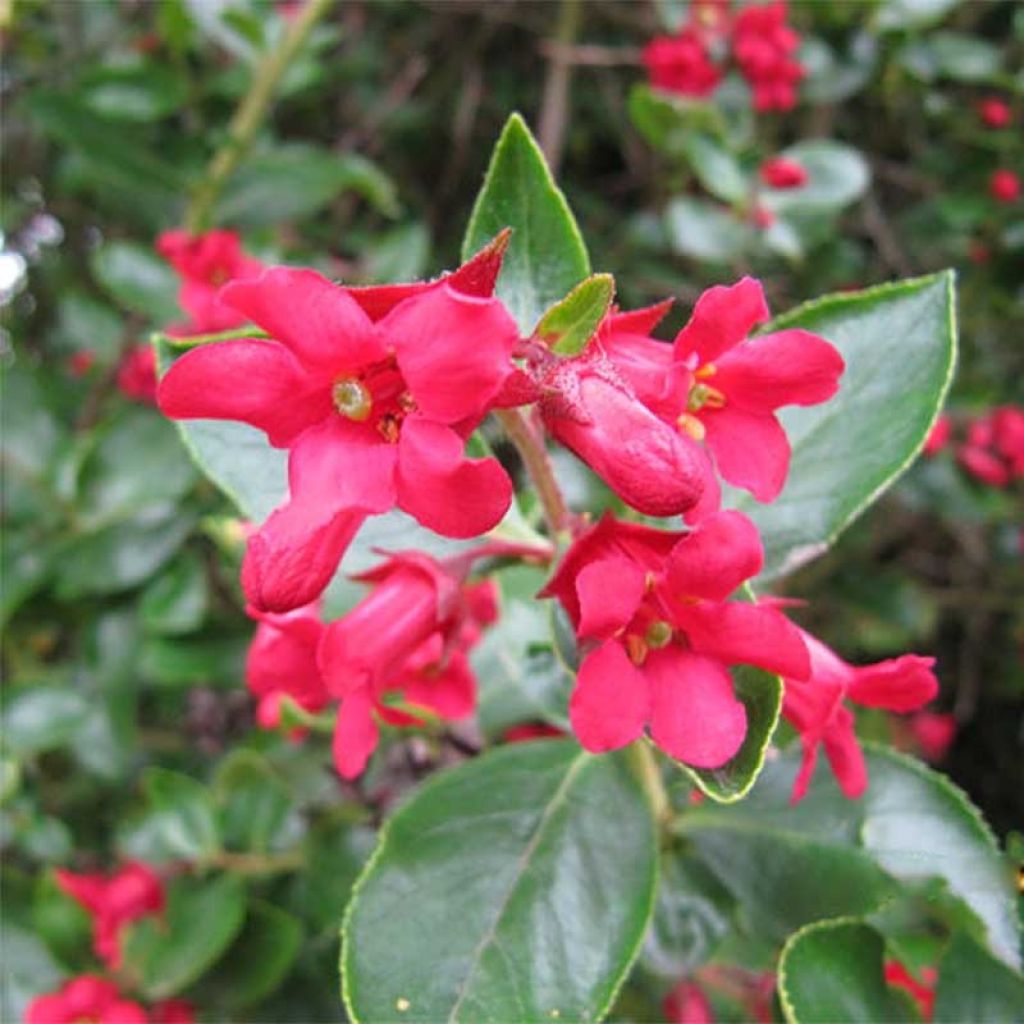

Escallonia C.F. Ball
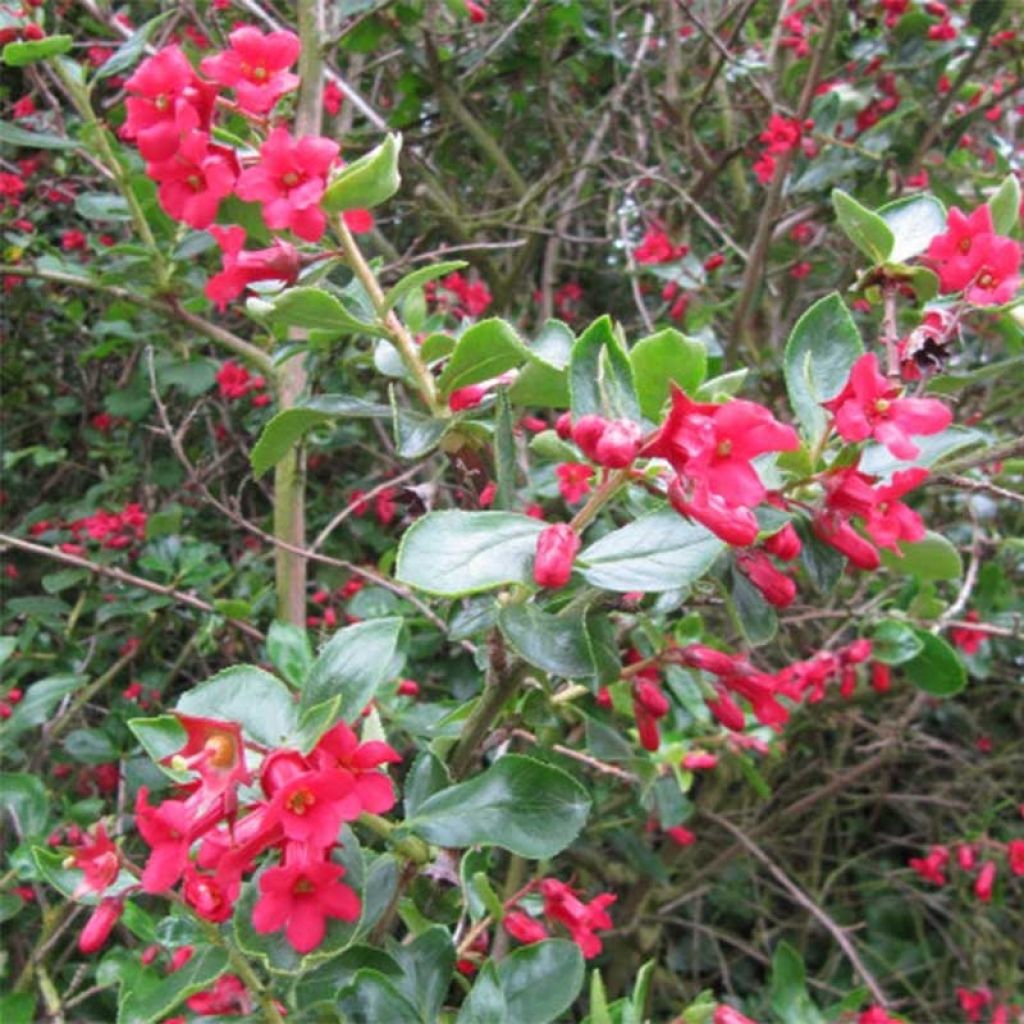

Escallonia C.F. Ball
Escallonia C.F. Ball
Escallonia C.F. Ball
Redclaws
This item cannot be shipped to the selected country
Delivery charge from €5.90
Delivery charge from €5.90
More information
Schedule delivery date,
and select date in basket
This plant carries a 24 months recovery warranty
More information
We guarantee the quality of our plants for a full growing cycle, and will replace at our expense any plant that fails to recover under normal climatic and planting conditions.
From €5.90 for pickup delivery and €6.90 for home delivery
Express home delivery from €8.90.
From €5.90 for pickup delivery and €6.90 for home delivery
Express home delivery from €8.90.

Does this plant fit my garden?
Set up your Plantfit profile →
Description
The Escallonia 'C.F. Ball' is a variety sought after for its uninterrupted summer flowering of short clusters of bright cherry red tubular flowers! It has a beautiful bushy, compact habit that offers dense, tough foliage of a dark glossy green throughout the year. Perfectly resistant to seaside conditions, it is a species that loves the sun and well-drained to dry, even chalky soils, but thanks to its robustness and hardiness it can also be planted in gardens far from the coast. Reaching a height of 2m (6.6ft), it is a good choice for creating medium-sized windbreak hedges or for complementing a shrub border in a small urban garden.
The Escallonia 'C.F. Ball' is a vigorous horticultural cultivar distinguished by its long-lasting bright red flowering. Escallonias belong to the Escalloniaceae family and are native to temperate areas of South America and Chile. In the wild, these shrubs grow among the scrub covering the hillsides or in exposed coastal areas.
The 'C.F. Ball' variety forms a bushy and dense branching habit, with relatively fast growth, reaching an average height of 2m (6.6ft) and a width of 2m (6.6ft) at maturity. Its small, tough, alternate, ovate leaves with serrated edges are a shiny dark green, measuring 2 to 6cm (2.4in) in length. They grow very densely towards the terminal part of the branches. The flowering takes place from June-July to September, for about a month, earlier or later depending on the climate, sometimes as early as May in warm climates. At the end of each branch, a cluster of 3 to 10cm (3.9in) is formed, composed of small five-petaled bell-shaped flowers in a bright cherry red colour turning dark carmine pink, measuring 1 to 2cm (0.8in), enclosed at the base in a red to purple-brown calyx.
The Escallonia 'C.F. Ball', an excellent shrub for contrasting and enhancing white or pink roses, dislikes only icy winds and excessively harsh winters. Well-known to gardeners in Brittany, Ireland, and England, it is also comfortable in Mediterranean climates, after careful planting and regular watering for the first two or three years. It is tolerant of heat and dry summers, once established, and chalky soils. It can flower in hot or shady situations. It is essential in coastal gardens, as its flowering, just like that of Olearias, would brighten up the grey foliage of Atriplex, Bupleurum fruticosum, or Correa alba rosea. In a large mass planting, it can be combined with cistus, lavenders, Hebe, or spring-flowering shrubs like lilacs, Kolkwitzia amabilis, or deutzias.
Report an error about the product description
Escallonia C.F. Ball in pictures
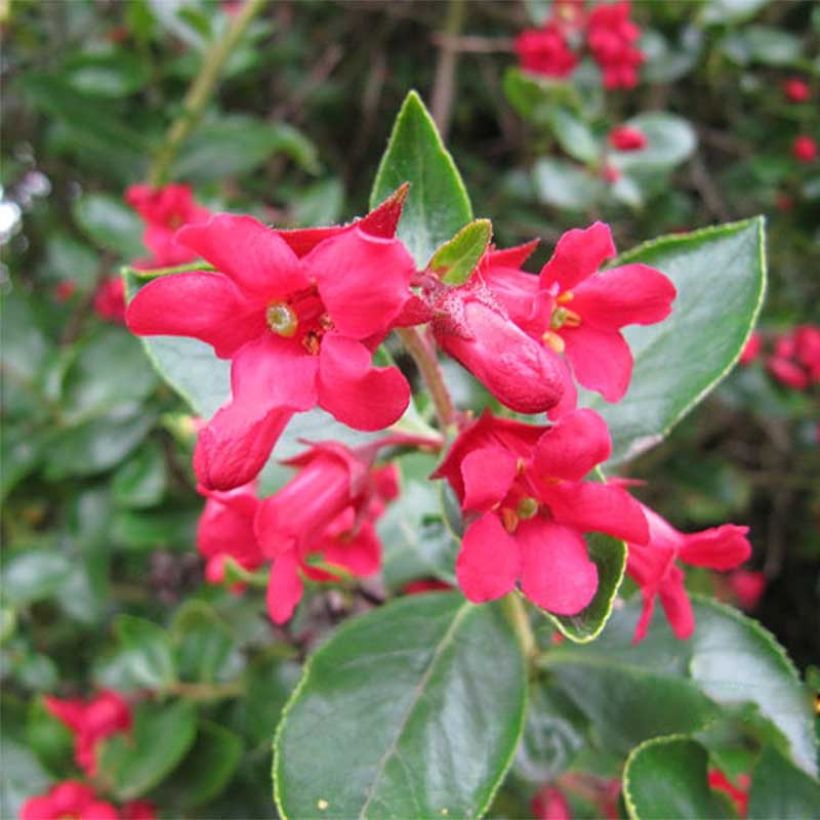

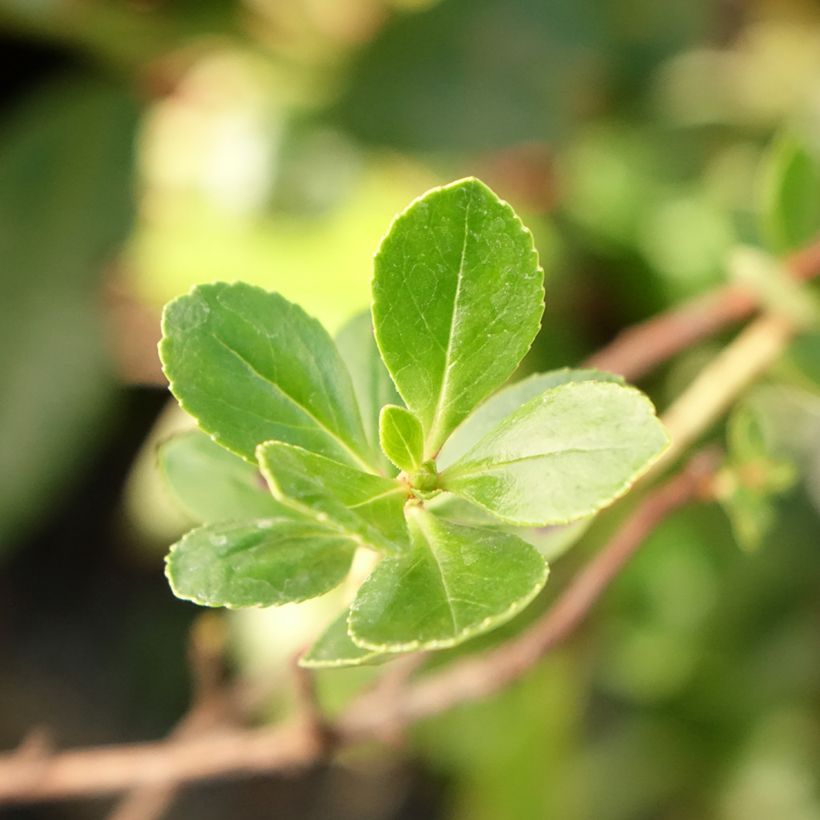

Plant habit
Flowering
Foliage
Botanical data
Escallonia
C.F. Ball
Escalloniaceae
Redclaws
Cultivar or hybrid
Other Escallonias
Planting and care
The 'C.F. Ball' Escallonia is best planted in spring or autumn in a very mild climate. It requires well-drained, moist, slightly acidic, neutral, or even chalky soil, in a sheltered and warm location. It blooms more abundantly in the sun but tolerates shaded exposures well. Once well established, it requires no watering in summer, even in dry climates. It can withstand sea spray but not cold winter winds. You can apply a rose fertilizer in spring if your soil is very poor. Prune to balance its silhouette in February and September. It dislikes heavy soils and stagnant water, especially in winter. If the soil is too heavy and chalky, it may suffer from chlorosis; if this is the case, apply a dose of sequestrene every spring. Prune to one-third of its height in the first years during establishment so that the bush acquires a dense and compact habit. You can also prune it into a ball shape. In cold regions, plant it in a sheltered location away from prevailing winds, south-facing against a wall or west-facing in the back of a flower bed or in a hedge, and mulch the base in winter. If your escallonia has frozen in winter, it is likely to regrow from the base in spring.
Planting period
Intended location
Care
-
, onOrder confirmed
Reply from on Promesse de fleurs
Evergreen shrubs
Haven't found what you were looking for?
Hardiness is the lowest winter temperature a plant can endure without suffering serious damage or even dying. However, hardiness is affected by location (a sheltered area, such as a patio), protection (winter cover) and soil type (hardiness is improved by well-drained soil).

Photo Sharing Terms & Conditions
In order to encourage gardeners to interact and share their experiences, Promesse de fleurs offers various media enabling content to be uploaded onto its Site - in particular via the ‘Photo sharing’ module.
The User agrees to refrain from:
- Posting any content that is illegal, prejudicial, insulting, racist, inciteful to hatred, revisionist, contrary to public decency, that infringes on privacy or on the privacy rights of third parties, in particular the publicity rights of persons and goods, intellectual property rights, or the right to privacy.
- Submitting content on behalf of a third party;
- Impersonate the identity of a third party and/or publish any personal information about a third party;
In general, the User undertakes to refrain from any unethical behaviour.
All Content (in particular text, comments, files, images, photos, videos, creative works, etc.), which may be subject to property or intellectual property rights, image or other private rights, shall remain the property of the User, subject to the limited rights granted by the terms of the licence granted by Promesse de fleurs as stated below. Users are at liberty to publish or not to publish such Content on the Site, notably via the ‘Photo Sharing’ facility, and accept that this Content shall be made public and freely accessible, notably on the Internet.
Users further acknowledge, undertake to have ,and guarantee that they hold all necessary rights and permissions to publish such material on the Site, in particular with regard to the legislation in force pertaining to any privacy, property, intellectual property, image, or contractual rights, or rights of any other nature. By publishing such Content on the Site, Users acknowledge accepting full liability as publishers of the Content within the meaning of the law, and grant Promesse de fleurs, free of charge, an inclusive, worldwide licence for the said Content for the entire duration of its publication, including all reproduction, representation, up/downloading, displaying, performing, transmission, and storage rights.
Users also grant permission for their name to be linked to the Content and accept that this link may not always be made available.
By engaging in posting material, Users consent to their Content becoming automatically accessible on the Internet, in particular on other sites and/or blogs and/or web pages of the Promesse de fleurs site, including in particular social pages and the Promesse de fleurs catalogue.
Users may secure the removal of entrusted content free of charge by issuing a simple request via our contact form.
The flowering period indicated on our website applies to countries and regions located in USDA zone 8 (France, the United Kingdom, Ireland, the Netherlands, etc.)
It will vary according to where you live:
- In zones 9 to 10 (Italy, Spain, Greece, etc.), flowering will occur about 2 to 4 weeks earlier.
- In zones 6 to 7 (Germany, Poland, Slovenia, and lower mountainous regions), flowering will be delayed by 2 to 3 weeks.
- In zone 5 (Central Europe, Scandinavia), blooming will be delayed by 3 to 5 weeks.
In temperate climates, pruning of spring-flowering shrubs (forsythia, spireas, etc.) should be done just after flowering.
Pruning of summer-flowering shrubs (Indian Lilac, Perovskia, etc.) can be done in winter or spring.
In cold regions as well as with frost-sensitive plants, avoid pruning too early when severe frosts may still occur.
The planting period indicated on our website applies to countries and regions located in USDA zone 8 (France, United Kingdom, Ireland, Netherlands).
It will vary according to where you live:
- In Mediterranean zones (Marseille, Madrid, Milan, etc.), autumn and winter are the best planting periods.
- In continental zones (Strasbourg, Munich, Vienna, etc.), delay planting by 2 to 3 weeks in spring and bring it forward by 2 to 4 weeks in autumn.
- In mountainous regions (the Alps, Pyrenees, Carpathians, etc.), it is best to plant in late spring (May-June) or late summer (August-September).
The harvesting period indicated on our website applies to countries and regions in USDA zone 8 (France, England, Ireland, the Netherlands).
In colder areas (Scandinavia, Poland, Austria...) fruit and vegetable harvests are likely to be delayed by 3-4 weeks.
In warmer areas (Italy, Spain, Greece, etc.), harvesting will probably take place earlier, depending on weather conditions.
The sowing periods indicated on our website apply to countries and regions within USDA Zone 8 (France, UK, Ireland, Netherlands).
In colder areas (Scandinavia, Poland, Austria...), delay any outdoor sowing by 3-4 weeks, or sow under glass.
In warmer climes (Italy, Spain, Greece, etc.), bring outdoor sowing forward by a few weeks.

































